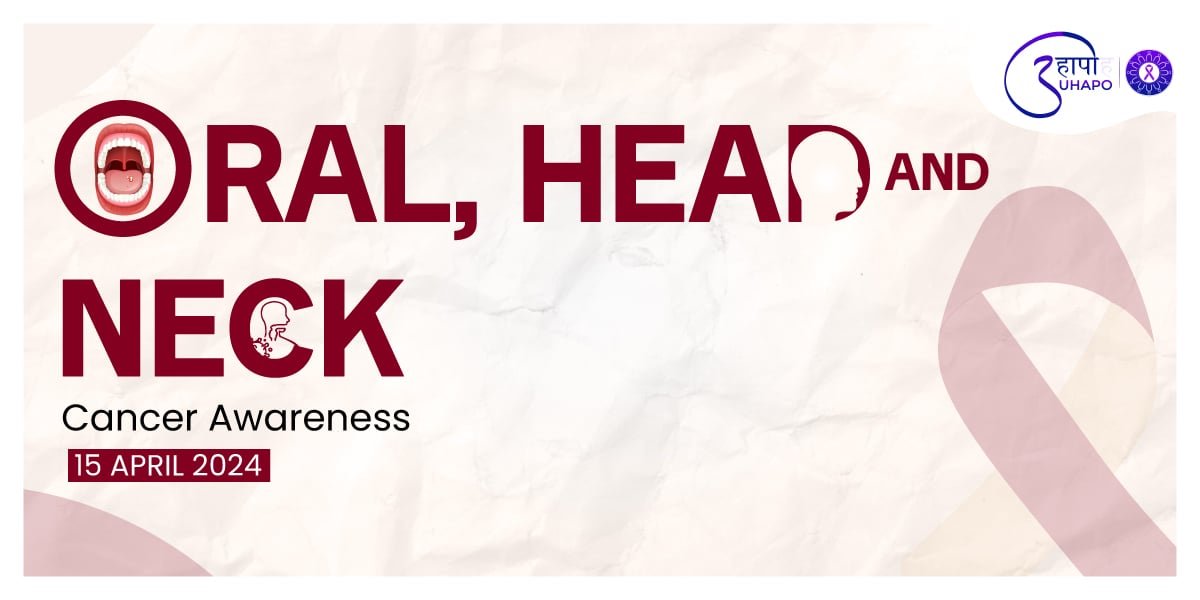Shedding Light on Oral, Head, and Neck Cancer: An Introduction to Awareness
Cancer is a serious illness among millions of the population majorly affecting human health and well-being causing nearly 1 in 6 deaths. Among the various types of cancer, oral, head, and neck cancer (OHNC) holds a unique position due to its impact on critical functions such as speech, swallowing, and facial aesthetics. Despite their significance, awareness about OHNC remains relatively low compared to other cancers, leading to delayed diagnosis and poorer outcomes.
In this blog post, Uhapo Health Services delves into the world of oral, head, and neck cancer, shedding light on its prevalence, risk factors, symptoms, and the importance of early detection.
The various types of cancer, oral, head, and neck cancer hold a unique position due to their impact on critical functions
What is Oral, Head, and Neck Cancer?
Oral, head, and neck cancer collectively refer to a group of cancers that affect the oral cavity, pharynx, larynx, paranasal sinuses, nasal cavity, and salivary glands. These cancers typically arise from the squamous cells lining these regions and can manifest as squamous cell carcinoma. While tobacco and alcohol use have long been recognized as the primary risk factors for OHNC, emerging research suggests that infections with human papillomavirus (HPV) also play a significant role, particularly in oropharyngeal cancer cases.
Prevalence and Incidence
OHNC constitutes a significant burden on global health, with over 830,000 new cases diagnosed annually worldwide. The incidence of these cancers varies across regions, influenced by socio-economic factors, lifestyle choices, and access to healthcare. In certain populations, such as those in South Asia and parts of Africa, the prevalence of oral cancer is particularly high, attributed largely to widespread tobacco and betel nut consumption.
Risk Factors
Several risk factors contribute to the development of oral, head, and neck cancer, including –
- Tobacco Use – Smoking tobacco, whether in the form of cigarettes, cigars, or pipes, significantly increases the risk of developing OHNC. Smokeless tobacco products, such as chewing tobacco and snuff, are also linked to oral cancer.
- Alcohol Consumption: Excessive alcohol consumption, especially when combined with tobacco use, synergistically increases the risk of developing head and neck cancers.
- Human Papillomavirus (HPV) Infection – Certain strains of HPV, particularly HPV-16 and HPV-18, are associated with an increased risk of oropharyngeal cancer, especially among younger individuals.
- Betel Nut Chewing – In regions where betel nut chewing is prevalent, such as South and Southeast Asia, the habit has been linked to an elevated risk of oral cancer.
- Poor Oral Hygiene – Chronic poor oral hygiene, including lack of regular dental check-ups and untreated dental conditions, may predispose individuals to oral cancer.
Symptoms
The symptoms of oral, head, and neck cancer can vary depending on the site of the tumor but may include –
- Persistent sore throat
- Difficulty swallowing
- Hoarseness or changes in voice
- Swelling or lumps in the mouth or neck
- Persistent ear pain
- Unexplained weight loss
- Oral bleeding or numbness
- White or red patches in the mouth or on the lips
Importance of Early Detection
Early detection plays a pivotal role in improving outcomes for oral, head, and neck cancer patients. Unfortunately, these cancers are often diagnosed at advanced stages when treatment options are limited, and prognosis is poorer. Regular screenings and prompt evaluation of suspicious symptoms are essential for detecting OHNC at an early, more treatable stage.
Conclusion
Oral, head, and neck cancer pose significant challenges to public health, yet awareness about these cancers remains inadequate. By understanding the risk factors, recognizing the symptoms, and prioritizing early detection, we can empower individuals to take proactive steps towards prevention and timely intervention.
In subsequent posts, we will delve deeper into specific aspects of OHNC, including treatment modalities, supportive care, and survivorship issues, with the aim of creating greater awareness and improving outcomes for those affected by these cancers.
Get in Touch With Us
If you or your loved one are facing any challenges and health concerns, you can get in touch with Uhapo Health Services for assistance with navigation, awareness, and advocacy.
You can Contact us via –
- Phone: +91-9137-44-1392
- Email: info@uhapo.co.in
- Website: https://www.uhapo.co.in/
Feel free to reach out to us for support, guidance, and information regarding your health-related queries and concerns. We’re here to help you every step of the way!


2 Replies to “Shedding Light: An Introduction to Oral, Head and Neck Cancer Awareness”
November 4, 2024
August 6, 2025